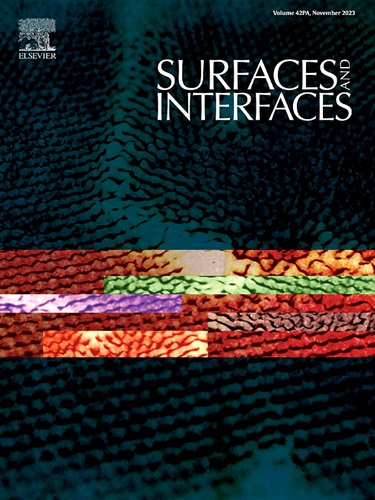Strain engineering of epitaxial perovskite-type LaFeO3/ BiFeO3 heterostructures for photoelectrochemical water splitting
IF 5.7
2区 材料科学
Q2 CHEMISTRY, PHYSICAL
引用次数: 0
Abstract
Following the approach of inducing structural constrains for the creation of polar nanodomains/nanoregions in the perovskite thin films, the photoelectrochemical properties of complex heterostructures based on LaFeO3 and BiFeO3 materials have been studied in correlation with the imposed structural strain and polarization orientation anisotropy conditions. The LFO/BFO thin film heterostructures have been tested using photoelectrochemical (PEC) technique. The recorded photocurrent values for the heterostructure with the LFO layer on top- LFO/BFO/STON- in the potentiodinamic regime are considerably higher (∼ 1.64 mA/cm2 at 2 V vs RHE) than those obtained for BFO/LFO/STON heterostructure where the BFO layer is acting as the surface layer (∼ 0.32 mA/cm2 at 2 V vs RHE). Moreover, the LFO/BFO/STON heterostructure exhibits both photocathodic and photoanodic behavior. The atomic resolution STEM data demonstrate the polarization orientation anisotropy in LFO/BFO/STON heterostructure, due to the cooperative effects of competing surface chemistry and polarization of the LFO/BFO interface over the magnitude and orientation of the Fe3+ cations displacement within the La3+ cages. For the BFO/LFO/STON heterostructure however, robust single-oriented domains with large Fe3+ cations displacement characteristics for long-range ferroelectric order, has been revealed also. Taking into account the possibility to control the PEC features such as charge distribution/transport characteristics for both photocathodic/photoanodic reactions, as well as the control of the polarization direction without a pre-poling process, this work is of relevance for applications where the use of a top electrode is not possible.

求助全文
约1分钟内获得全文
求助全文
来源期刊

Surfaces and Interfaces
Chemistry-General Chemistry
CiteScore
8.50
自引率
6.50%
发文量
753
审稿时长
35 days
期刊介绍:
The aim of the journal is to provide a respectful outlet for ''sound science'' papers in all research areas on surfaces and interfaces. We define sound science papers as papers that describe new and well-executed research, but that do not necessarily provide brand new insights or are merely a description of research results.
Surfaces and Interfaces publishes research papers in all fields of surface science which may not always find the right home on first submission to our Elsevier sister journals (Applied Surface, Surface and Coatings Technology, Thin Solid Films)
 求助内容:
求助内容: 应助结果提醒方式:
应助结果提醒方式:


